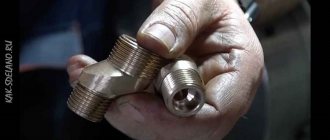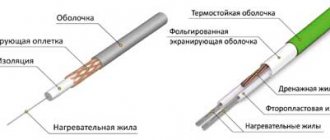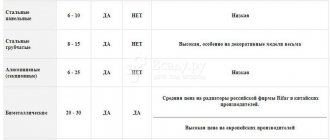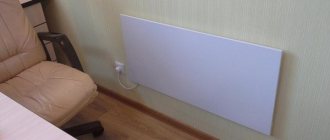A convector is a device used to heat residential premises. The design involves the use of its own heating element to heat the room. This allows you to bypass the mediation of any coolant, making the heating element for the convector the central part of the unit. That is why systems without the use of water or oil as an intermediary are placed in a separate class. The modern convector assembly scheme allows for efficient operation at a fairly low heater temperature.
What is a ceramic fan heater?
Fan heaters
They are quite effective equipment for additional heating of various rooms and for creating a thermal air curtain. ... Located in an ordinary living room, where a spiral fan heats the air, sometimes very difficult due to lack of oxygen.
Interesting materials:
How can I remove adhesions in pipes? How can you remove dried super glue? How to remove pills from a sweater? How to remove cat hair? How to remove eyebrow dye from clothes? How to remove build-up in the toilet? How to remove paint stains on clothes? How to remove stains from stainless steel? How to remove a stain on a down jacket? How to remove mercury from a broken thermometer?
Needle heaters in convectors
Needle heaters (tape) are a thin plate (tape) of dielectric on which a chrome-nickel filament is installed so that loops are formed on each side. This heating conductive thread is coated with a special insulating varnish. The needle heater is characterized by a high temperature heating filament, but also minimal thermal inertia - it heats up and cools down almost instantly. Convection in devices built on needle heaters is carried out mainly due to the design of the housing. Another feature of the needle heater is that the varnished heating filament is practically not protected from moisture, so convectors with such heaters are not suitable for wet rooms.
The main advantage of convectors with a needle heater, which often outweighs some of the disadvantages, is their low price. Convectors with a needle heater will cost one and a half times lower compared to devices of the same power with a different type of heating element. If you see a convector cheaper than 2,000 rubles, most likely this is the heater installed there.
Convectors with a needle heater: Neoclima
What power should I buy?
When selecting the power of the device, you can use the following formula: for every 10 sq. m. of room area should account for 1 kW of electric convector power, provided that the height of the walls in the room does not exceed 2.7 m. For a higher room height, an additional 10% of power should be added for every additional 10 cm.
In addition, other points need to be taken into account:
- ensure a good indoor microclimate using electric convectors , it is necessary to install a number of convectors in the room equal to the number of windows in it;
- If you need a device for a corner room, a room with a large glass area or a room located above a cold basement, then in this case you should choose a good high-power convector.
Taking these points into account, you can choose a good electric convector. While in the store, you can seek help from consultants who will make it easier for you to choose a heating device.
Monolithic heating elements
In monolithic heating elements, a nichrome filament with a dielectric filler is located in a solid aluminum body with developed fins. When heated and cooled, all parts of the monoblock expand and contract equally, which eliminates friction and the appearance of microcracks. They are silent in operation and very durable. The monolithic design made it possible to minimize intermediate heat losses and further reduce the temperature on the surface of the fins compared to heating elements. Typically, devices with such heaters have a degree of protection of IP24.
Convectors with a monolithic heating element: NOBO
What is the convection process?
From a school physics course, everyone knows that when air is heated, its density decreases and it rushes upward. Cold layers of air, due to their gravity, easily displace it. This is how cyclones form in the atmosphere of our planet. Over individual areas of the surface, heated masses of air rush upward, and the vacated space is occupied by flows from cold areas.
This process also occurs in confined spaces, but on a much smaller scale. It's called convection. Convectors are designed to effectively manage it.
Frequently asked questions about electric convectors
To avoid any difficulties during the operation of the electric convector, it will be useful for the future owner of this device to receive answers to frequently asked questions about the operation of this device.
Which convectors demonstrate the greatest operating efficiency - high or low?
The efficiency of a device is not determined by its size. Power is the key factor here. The various form factors in which electric convectors are offered on the market are created in order to provide the opportunity for their convenient integration into the interior of premises.
Is leaving the device unattended dangerous for the owner?
There is no danger if you leave your home for a while with the convector running. The main thing is that the wiring installed in your apartment can withstand the power of all devices connected to the network. You don't have to worry about the rest.
Is it possible to use an electric convector as the main source of heating in a room?
In most cases, yes. Everything largely depends on the equipment model and recommendations of the manufacturer.
Is an electric convector suitable for heating a nursery?
Yes, it is quite. Many manufacturers of this equipment have models that are designed specifically for use in children's rooms. The devices have a streamlined shape , and the body is highly durable. The holes in such devices are small, so a child will not be able to put anything in there.
Design and principle of operation of the convector
The efficient operation of the electric heater is ensured by natural convection (circulation) of air in the room . As mentioned above, the main element of the device is the heating element for the convector, placed in a metal case, which most often has a rectangular shape.
The operating principle of the electric heating device is as follows. Cold air enters the housing through holes in its lower part. When heated, the air masses rise upward and return back to the room through the holes on the front surface of the convector. Gradually cooling, the air falls down again, and the cycle repeats again.
Important! Continuous circulation of cold and warm air ensures fast and efficient heating of the room in which the electric convector is installed.
On the domestic market, potential consumers can find convectors equipped with open and closed electric heating elements.
- Devices with open-type heaters are equipped with a mechanical temperature controller and are characterized by low cost, ease of control and rapid heating of the housing. However, their degree of electrical protection does not exceed IP21.
- Devices with closed-type heaters are more expensive, have a number of preset operating programs and additional options, and are equipped with an electronic thermostat. They are characterized by low power consumption and an increased degree of electrical protection (IP24).
Where is the best place to install a convector?
Before choosing an electric convector, the consumer must decide on its location in his home. Modern models of this equipment can be installed on the wall. For this purpose, special fasteners are used , which come with the unit. Many models can be installed on the floor, which makes the convector mobile. If necessary, it can be moved around the room or moved to another room. If you need a mobile electric convector, then in this case the choice should be made from models that are equipped with wheels.
Heater from inside. What are the manufacturers hiding?
When choosing an electric heater for an apartment or house, we often look at the price or appearance.
The most common electric heaters are oil radiators, fan heaters and electric convectors. If you have already decided on the type of heater, then we suggest you find out what’s inside each of them. After all, the efficiency, reliability, and most importantly the safety of any heating device depend on the elements.
Let's figure out what a modern electric convector consists of
Frame
Electric convector housing
Electric convector housing
the first thing we see and looking at what we make a choice. With the exception of expensive and rather specific models of electric convectors, the body of most convectors is made of sheet metal. Despite the external similarity, it is worth paying close attention to the following aspects.
Metal processing
The housings of cheap convectors are poorly designed. The edges are often not polished and, as a result, remain sharp and dangerous (remember the quality of metal processing in cheap barbecues. Assembling such a barbecue without gloves and without cutting yourself is a real art).
Paint quality.
Paint smudges, unevenness and scratches are a sign that most likely after 1-2 seasons of operation your convector will have a very “sad” appearance. Due to temperature changes, such paint may simply fly off.
Lattices
Convector grilles can be part of a stamped body or applied as a separate element (made of a different metal). The latter are more preferable.
In addition to their aesthetic function, such grilles have a smaller cell size, which means they are safer. Objects that could interfere with operation or cause a fire or short circuit will not pass through such a grille.
However, they do not interfere with the normal convective movement of air flow.
The heating element is the part on which safety of operation and influence on the composition of the air in the room largely depend
There are several types of heating elements. The most common are needle heating element
(aka “stitch” or “fishbone”) –
the simplest, most unreliable and least secure element. It essentially consists of wire that is woven into a mica plate. The heat transfer area of such a heating element is small and to effectively heat the passing air, the wire is heated to red (heated).
Contact with such an element by fluff, wool and other small elements is accompanied by the appearance of a characteristic odor. In some cases, fire may occur. In addition, when air comes into contact with hot parts, oxygen is burned.
The air becomes dry, with all the ensuing consequences.
X-shaped monolithic heating element
This is, as a rule, a monolithic aluminum heating element of a fairly large size. This type is preferable. It does not become red hot, because... due to its size, it has a large heat transfer area and it simply does not need to heat up to red. As a result, it is more fireproof and reliable. This element is installed in more expensive models.
Monolithic heating element HEDGEHOG
HEDGEHOG
the most modern and reliable. This is an advanced x-shaped heating element. It has an even larger heat transfer area due to its ribbed design. Such a heating element gives off much more heat while consuming less energy. With equal power parameters, such a heating element is more compact than its predecessors and other analogues.
Convectors with such a heating element do not produce any extraneous sounds during operation (creaks, crackles and other sounds).
How to choose a convector with modern heating elements in a store? Just! Turn the convector over and look into the air intake grille from below. See the big aluminum heating element? You can take it!
Control mechanism (unit) – responsible for efficiency and reliability
There are 3 types of control
Mechanical
This is an ordinary “twist”. A convector with this type of control is the least expensive. A mechanical thermostat, although reliable, consumes the most electricity during operation.
The fact is that it determines the temperature in the room with low accuracy. In other words, it heats when there is no longer any need to heat and does not turn on when it is already necessary to turn on.
Energy consumption due to such on/off switching is high.
Electronic
more accurate and informative type of control. It allows you to more accurately set the temperature and maintain it more accurately. Such units, as a rule, have several operating modes and power.
Such control units are installed in more expensive models of electric convectors.
By overpaying, in this case, you get a more comfortable temperature and lower, relative to mechanical control, energy consumption
Inverter
This is the most modern control unit. It differs from the previous ones by its reduced power consumption during operation and the presence of additional functionality. The ambient temperature sensor of such a control unit is located outside the body of the control unit itself.
Therefore, it monitors the temperature more accurately and adjusts the operating power accordingly. There are 18 operating modes of this control unit.
If we compare the operation of a convector with driving a car and the consumption of gasoline, then a convector with an inverter unit is “smooth acceleration and smooth braking” in which the life of the car increases and gasoline consumption decreases.
If we apply the comparison to a mechanical type of control, then it will be a sharp start from a traffic light and braking at the last moment. With this driving style, gasoline consumption is maximum.
Such comparisons are confirmed by tests from the ROSTEST laboratory, which showed that the inverter convector does not consume 78.8% less energy. than a mechanically controlled convector of similar power.
Choose the right and safe heating!
Which convector to choose
If we talk about which heater is better to choose, the answer will be ambiguous. With all the obvious advantages, each type has its own disadvantages. For example, the tubular element has the longest glow time. During active operation, it can make clicking sounds and squeaks caused by the expansion of the structure. In turn, the monolithic element scares off most buyers due to its high cost. Not everyone is willing to overpay for a significant degree of protection and minimal heat loss.
Most often, consultants in stores recommend purchasing convectors with a monolithic element or heating element.
The decision about which convector is more efficient should be made based on the characteristics of the heated room.
- If the room is not humid and the speed of air heating does not play a key role, a conventional heating element is best suited.
- However, if it is necessary to constantly maintain comfortable conditions in the room, it would be more correct to give preference to a monolithic element. An efficient convection system will allow you to save a little on electricity.
- You can also turn your attention to combined type models, such as an infrared heater with a convection function. This device combines heating through a heating element and an infrared element, which allows you to quickly warm up the room with little electrical energy consumption.
Experts advise paying attention not only to the heating element. Maximum operating power, spatial arrangement, mobility and ergonomics of the housing also make a significant contribution to efficiency. Carefully study the technical characteristics of the device, and you can easily choose the convector that suits you.
Criterias of choice
Taking into account the characteristics of each type of heating element, you can choose one that is suitable for the specified purposes or the room where it will be used. If heating speed does not matter, it is better to choose durable and reliable heating elements or monolithic heaters. At a higher price, they will be able to work for a long time.
For long-term operation and slight but constant heating of the air, preference should be given to a monolithic system. A developed heat exchanger allows you to save energy even during long-term operation of the device: it can be turned on at full power to achieve operating temperature or rapid heating and left to maintain the desired temperature at ½ power.
Tips: how to choose a convection heater for your home
Today convectors are produced in a wide variety of designs. These can be floor, wall, or baseboard heaters. The first ones, floor and wall, can have a height of up to twenty centimeters, but their length is decent - sometimes it can reach up to two and a half meters. If such a convector needs to be installed under a window opening, then it is better to choose a similar model.
Not all convectors are the same and differ not only in brand name
When choosing a convector, you need to consider the following characteristics:
- Device size;
- Power consumption;
- Price;
- Heater type;
- Additional features;
- Brand.
Power is a guideline that depends on the size of the room to be heated. For every cubic meter of room, it is believed that 25 watts of power is required.
Dimensions are also an important point, and height is often taken into account. It determines how fast the air will move. There are low heaters, they organize the rapid movement of air, which means the room heats up faster. Whether the device is heavy is also important, because you will have to rearrange it, which is very inconvenient.
Of course, the safety of the heater should not be in doubt. But usually heaters are just that. It’s good if the body has no corners and its contours are smooth.
The design and principle of operation of such a heater
A simple device is the main feature of convector equipment. In fact, the design of these devices consists of two parts - the body and the heating element. At the bottom of the electric convector structure there are holes for drawing in cold air. In the upper part there are holes for releasing cold air.
One of the design elements of this device is the heating element, which is located at the bottom of the device. It processes the cold air entering the convector housing. After it heats up, it rushes upward. The outlet openings are located at a slight angle relative to the vertical in the electric convector. The heated air mass moves along a parabolic trajectory. As it cools, it sinks to the floor. Then the cycle repeats again.
The main advantage of an electric convector is that it distributes heated air evenly throughout the entire volume of the room. During operation, it does not make any noise , which is possible with
Diagnostics of heating elements for electric convectors
In general, a convection heater is a fairly simple device with a small number of components built inside. The basis of the device is one or more heating elements capable of generating heat. If they malfunction, the convector stops heating the room. You can make sure that it is the heater that has failed only by testing it.
As a rule, modern convectors are equipped with closed-type heaters. Their open structures are extremely rare. In the event of a breakdown, a closed heating element is replaced - it cannot be repaired. It is best to check its performance using the simplest multimeter (tester) turned on in resistance measurement mode.
The resistance of the heating element is measured as follows:
- disconnect the power cable;
- set the resistance measurement limit on the multimeter to 200 Ohms;
- apply the tester probes to the contacts of the heating element;
- Based on the readings that appear on the multimeter display, a conclusion is drawn about the serviceability of the heating element.
The heating element is operational if the measured resistance value does not exceed several tens of Ohms . In cases where the display shows “0” (short circuit) or the “infinity” icon (break), we can conclude that the heating element is faulty and must be replaced.
Important! Heating elements for convectors belong to the category of non-repairable units. They can be replaced by anyone who knows how to hold the simplest tools in their hands. The main thing is to find and select a heater model that is similar or suitable in terms of technical parameters, overall and connection dimensions.
So, when choosing a convector, you should first of all find out the type of heating element used. This determines in which room it can be used for its intended purpose. And during operation, you must follow the rules and recommendations indicated by the manufacturer of the equipment in the user manual. This is necessary so that the electric heater lasts as long as possible, since it cannot be repaired.
Tubular heaters (TEH) with aluminum fins
A tubular electric heater (TEH) is a nichrome filament installed in a steel tube filled with quartz, ceramic or magnesium. An aluminum fin is attached to the tube, which acts as an effective heat exchanger. As a rule, the configuration and arrangement of aluminum finning plates differs from one manufacturer to another, but this does not change the meaning. The developed fins of such an aluminum diffuser ensure intense heat transfer from the heater to the air and enhance convection. The temperature of such heaters is significantly lower than needle heaters, they are also more unpretentious and more durable. Basically, convectors with tubular heaters are made in a splash-proof design (IP24) and are approved for installation in wet rooms at a distance of at least 60 cm from “open water” (bathtubs, pool edges, etc.).
Devices with such heaters are more expensive than needle convectors, but cheaper than monolithic ones. For example, heating elements are installed in Atlantic convectors
or
Thermor
.
Types and features of thermostats
The design of the electric convector includes a thermostat. In modern models it can be mechanically or electronically controlled. Devices with a mechanical thermostat are more affordable. However, its presence in the convector also brings certain inconveniences.
Among the most serious, we highlight the following:
- does not hold temperature well;
- during operation consumes large quantities of electricity;
- When the device operates, characteristic clicks occur - not only when turned on, but also when turned off. This can be annoying for the owner.
Compared to a mechanical thermostat, an electronic thermostat has many advantages:
- does not make noise during operation;
- the set temperature with minimal deviation - it does not exceed one tenth of a degree;
- reduces the energy consumption of the installation within its capabilities;
- “climate control” can be carried out remotely;
- has support for several operating modes.
Although heating devices equipped with an electronic thermostat are more expensive, their price tag is quite justified.











